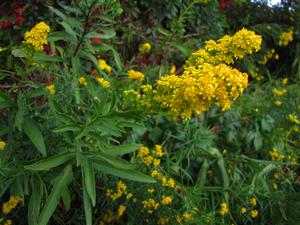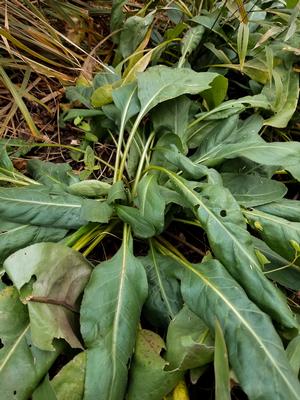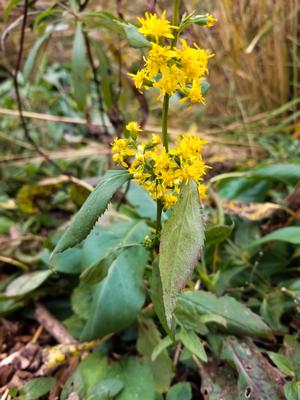Solidago sempervirens
Common: seaside goldenrodSolidago sempervirens LP50 - 50 per flat
- Height: 3'-6'
- Spread: 2'-3'
- Spacing: 18"
- Hardiness Zone(s): 3-9


Solidago sempervirens LP50 - 50 per flat


An east coast native that is useful for dune restoration projects, stormwater management, roadside, and habitat plantings.
A low maintenance native that makes a great addition to pollinator gardens and ornamental flower beds. Pinch the growing tips in early summer if a more compact plant is desired. Cut stems back down to the ground after flowering, as they will not bloom again.
Naturally grows in coastal areas in sand with high salt levels, only reaching about 3 feet tall because of the extreme site conditions. If you plant it in rich, moist garden soil it can grow up to 6 feet tall and may require staking. Overwatering and overfertilization can cause masses of foliage with few flowers.
Solidago sempervirens is a low-maintenance native that makes a great addition to pollinator gardens and ornamental flower beds. Growing 3-5’ tall, stems erupt from a tight clump of evergreen blue-green basal leaves. Producing golden-yellow tight blooms at the terminal end of long stalks, seaside goldenrod is notably different for its almost succulent-like foliage and flowers, a protection against the ocean winds. Extremely tolerant of salt, periodic inundation, and drought, Solidago sempervirens is tough and blooms late in the summer, extending the season and adding nectar sources for migrating insects.
Seaside goldenrod is native to eastern coastal areas stretching from Newfoundland to Texas. Over time, it has naturalized in the Midwest along the Great Lakes. Commonly found along roadsides, pine woods, coastal marshes, estuaries, bay shores in sunny locations with moist to dry soils. It spreads readily by seed and hybridizes easily with Solidago rugosa. In lean soils, the plant generally grows about 3’ tall – in rich, moist garden soil; seaside goldenrod has been known to grow up to 6’ tall and may require pinching or staking. For best appearance, pinch the growing tips in early summer if a more compact plant is desired.
Over the years, Solidago sempervirens wanders through our trial gardens, the evergreen basal leaves providing groundcover even in the winter. A major food source for fall migrating monarch butterfly; it also provides benefits to native wildlife such as songbirds, butterflies, and small mammals. Solidago sempervirens is useful for dune restoration projects, stormwater management, roadside, and habitat plantings.